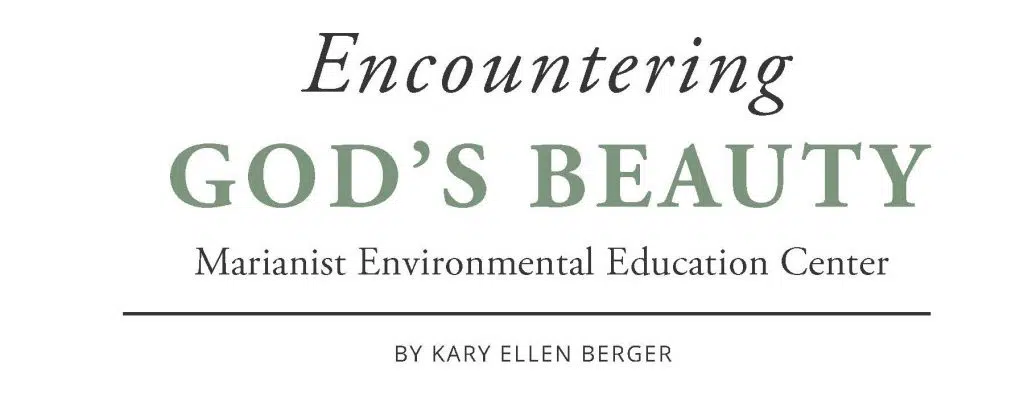Encountering God’s Beauty

There is a difference between viewing God’s beauty and encountering it. Tara Poling, the Program Coordinator of the Marianist Environmental Education Center (MEEC), noted that comparison when discussing the property at Mount Saint John, named for their patron, St. John the Apostle. For more than 100 years, its 150 acres in Greene County have been owned and maintained by the Society of Mary (Marianists).
It’s home to Marianist brothers and priests, as well as MEEC, the North American Center for Marianist Studies, the Marianist Mission, the Bergamo Center for Lifelong Learning, Gallery St. John, Queen of Apostles parish and a nature preserve boasting 100 acres.
“Caring for the earth is central to Mount Saint John,” said Jeff Bohrer, Director of Mount Saint John Facilities. “MEEC helps to guide environmental sustainability on the grounds and they help manage 100 acres of natural area. Our buildings and grounds are outfitted with LED lighting, energy efficient HVAC, and highly insulated roofs and walls where possible. We even have an electric riding mower to help with grounds care!”
Adorned with more than 140 varieties of trees, 11 sculptures and the Our Lady of Lourdes grotto, the property also houses nature trails, Queen of Heaven Cemetery and a native plant labyrinth.
“When I walk the labyrinth I pray with Job: ‘ask the plants of the earth and they will teach you’ (12:8). I am inevitably given a message back,” said Sister Leanne Jablonski, FMI, the Director of MEEC.
Brother Mitch Schweickart, SM, said that the natural circle of life seen throughout the grounds is comparable to the resurrection of Christ.
“When I walk the trails of Mount Saint John, I most often look for, and tune my nose toward, the fallen and rotting vegetation,” said Brother Schweickart. “This is where I find the fungi, insects, and worms that are often ignored or even destroyed by others who come to the property. These decomposers are the renewal agents of the varied ecosystems of Mount Saint John. They convert the dead matter into new soil and nutrients for the next cycle of growth. These humble and often despised species of the environment are the foundation for the health and welfare of all the other ‘majestic’ species of our ecosystems.”
Focusing on the grounds’ educational aspect, Brent Devitt, the director of the Bergamo Center for Lifelong Learning, shared that the annual Midwest Native Plant Conference is hosted on the property each summer, and many gladly experience the beauty Mount Saint John has to offer throughout the year.
“Hundreds of thousands in our Catholic community – and others – have made retreats at Bergamo Center over the past 50 years and enjoyed the outdoor features as part of their experience,” said Devitt.
Reflecting on both the property at Mount Saint John and all of God’s creation, Poling said, “The natural world isn’t a work of art for us to sit back and enjoy, but something that is integral to our lives as humans – it nourishes us, brings us closer to the divine, and is in need of reconciliation. I think all creation, including human communities, would benefit from an expanded view of what is ‘beautiful’ to be inclusive of the interconnected, intimate relationships that define and sustain ‘nature.’”
This article appeared in the April 2022 edition of The Catholic Telegraph Magazine. For your complimentary subscription, click here.













